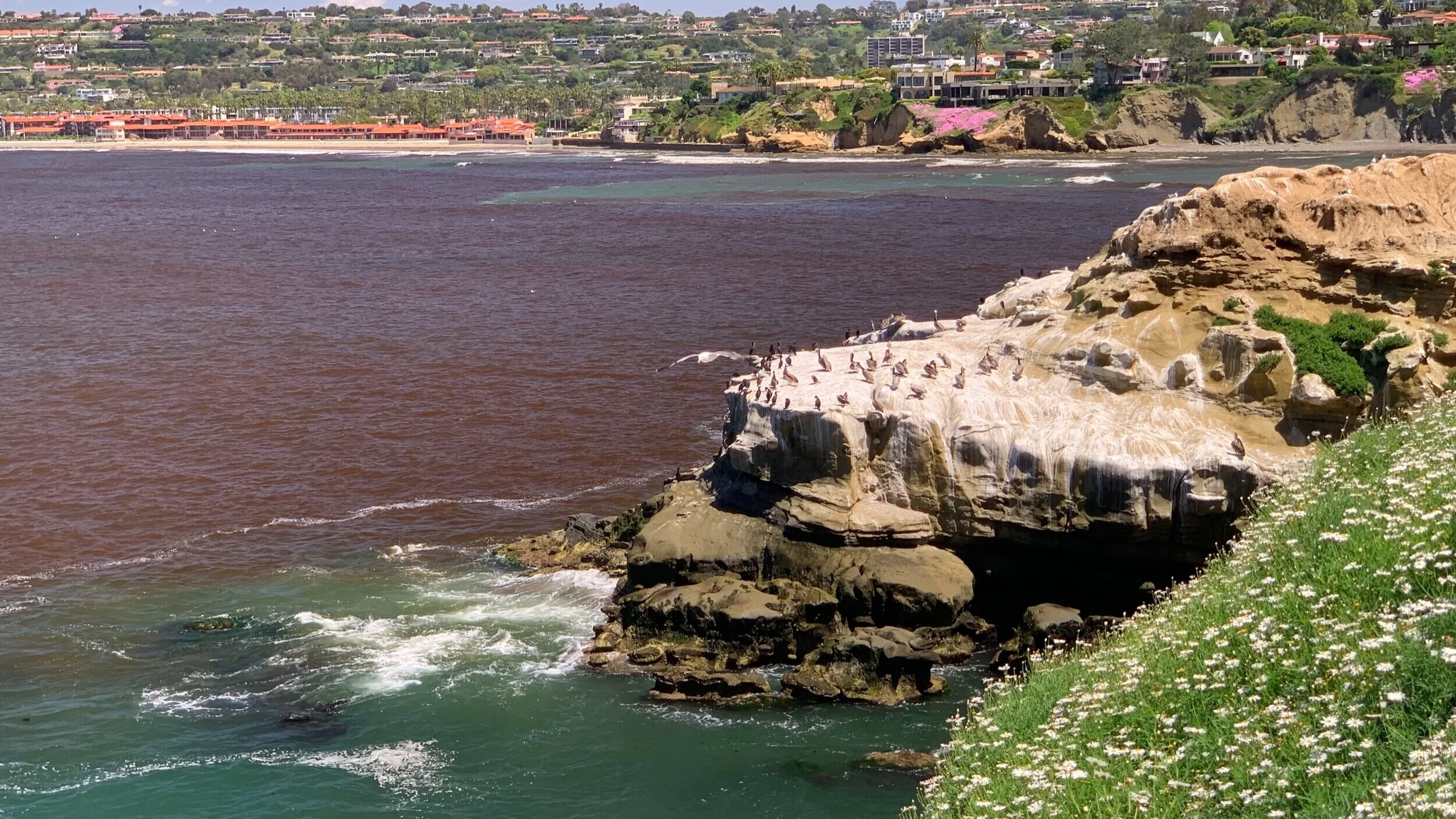INTERNAL WAVES
INTERNAL WAVES
PAYLOAD:
RBRmaestro CTD
JFE RINKO III Dissolved Oxygen Sensor
Seabird ECOpuck: ChlA, backscatter, phycoerythrin
Nortek Signature1000
INSTITUTION:
Scripps Institution of Oceanography, UCSD
DEPLOYMENT LOCATION:
La Jolla Canyon, La Jolla, CA, USA
SCIENTIFIC SUMMARY:
Internal waves are oceanic features responsible for substantial ocean mixing and energy dissipation. They often crash into nearshore ecosystems, generally forming internal bores that transport deep ocean water and associated constituents (nutrients, larvae, and acidic low-oxygen waters) onto the shelf and locally enhance turbulence and mixing, with important effects on nearshore ecosystems. The effects of internal waves in nearshore environments range from causation and mitigation of extreme events (hypoxia, acidification, and extreme heat) to fertilization success (Woodson, 2018).
Figure 1 - 9-day segment of a year-long Wirewalker deployment designed to monitor internal waves and water-column variability.
A year-long Wirewalker deployment was designed to monitor these internal waves and water-column variability in the La Jolla Canyon off Southern California. The Figure 1 shows a nine-day segment from that deployment.
The canyon is host to an energetic, mode-2 internal tide, with large vertical oscillations of isopycnals and tidally modulated strain (panels a and b). During typical conditions of calm weather, 50m tall internal tidal waves fill La Jolla canyon, causing twice daily temperature oscillations across the water column. Concurrently, twice daily surges of deep, cold, high salinity water flood the canyon, while a thin mid-water salinity minimum heaves vertically.
A strong subsurface phytoplankton maximum is also subject to vertical oscillations due to the internal tide. Mixing due to the internal tide fuels biological productivity in the canyon (panel c).
Backscatter observations demonstrate both the elevated particulate load associated with the phytoplankton and the complex patterns of sediment resuspension due to the internal tide (panel d).
REFERENCES:
Lucas, A.J., R. Pinkel, and M. Alford. 2017. Ocean wave energy for long endurance, broad bandwidth ocean monitoring. Oceanography 30(2):126–127, https://doi.org/10.5670/oceanog.2017.232.
Woodson, C.B. 2017. The Fate and Impact of Internal Waves in Nearshore Ecosystems. Annu. Rev. Mar. Sci. 2018. 10:421–41. https://doi.org/10.1146/annurev-marine-121916-063619












